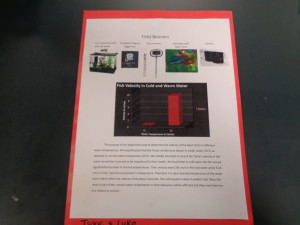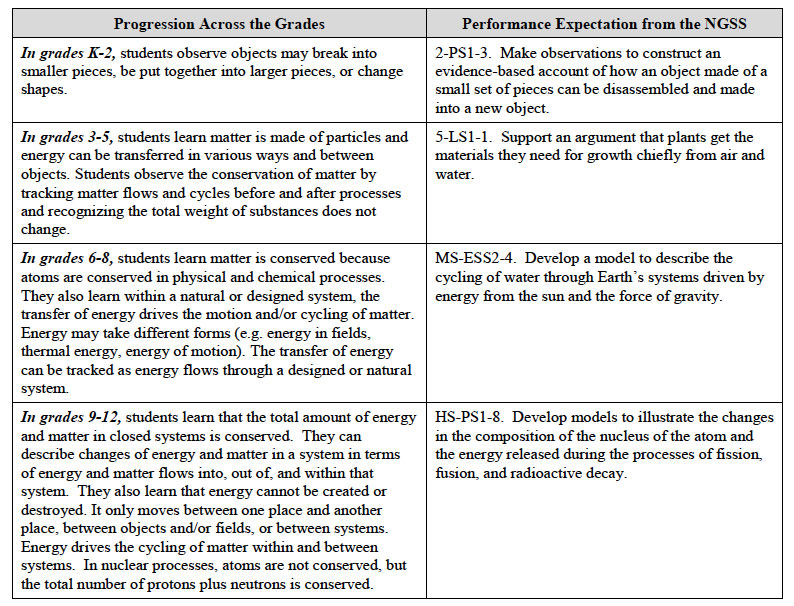Energy & Matter
Adding the CCC to Your Curriculum
Cross-Cutting Concepts (CCC’s) lend a sharper focus to the other two dimensions. Each CCC presents a unique lens in which to focus upon the content while the practice provides the method in which the content is explored. The particular focus of “Energy and Matter” is best described in the words of the Framework below.
To begin the process of adding a cause and effect focus to your curriculum, begin with one activity or lesson. For example, Defining Problems Activity #1: Heat Transfer does not need to be altered in order to apply the third dimension of CCC’s. Defining problems regarding energy and matter within the activity sharpens the focus of the activity and provides touchstones for students throughout discourse. Framing questions around energy and matter will provide structure for discourse, notebooking, and student thinking. Students are exploring heat transfer (content in this case) by way of defining problems (practice). These questions are sharpened and focused through the lens of energy and matter (CCC). In this way, the activity has not been drastically altered. It has rather been more focused for both students and teachers in communication, analyzation, and discourse.
After initial implementation, instructors will be able to identify other areas in which energy and matter can be used throughout their curriculum. Can you find another activity in the practices can be sharpened with the use of energy and matter? Try to find one in another practice.

Tenth grade students work together to investigate a testable question regarding velocity and Tetras.
Energy and Matter Progression through Gradebands:

Progression from NGSS Appendix G p. 9
In the words of the Framework…
One of the great achievements of science is the recognition that, in any system, certain conserved quantities can change only through transfers into or out of the system. Such laws of conservation provide limits on what can occur in a system, whether human built or natural. This section focuses on two such quantities, matter and energy, whose conservation has important implications for the disciplines of science in this framework. The supply of energy and of each needed chemical element restricts a system’s operation—for example, without inputs of energy (sunlight) and matter (carbon dioxide and water), a plant cannot grow. Hence, it is very informative to track the transfers of matter and energy within, into, or out of any system under study.
In many systems there also are cycles of various types. In some cases, the most readily observable cycling may be of matter—for example, water going back and forth between Earth’s atmosphere and its surface and subsurface reservoirs. Any such cycle of matter also involves associated energy transfers at each stage, so to fully understand the water cycle, one must model not only how water moves between parts of the system but also the energy transfer mechanisms that are critical for that motion.
Consideration of energy and matter inputs, outputs, and flows or transfers within a system or process are equally important for engineering. A major goal in design is to maximize certain types of energy output while minimizing others, in order to minimize the energy inputs needed to achieve a desired task.
The ability to examine, characterize, and model the transfers and cycles of matter and energy is a tool that students can use across virtually all areas of science and engineering. And studying the interactions between matter and energy supports students in developing increasingly sophisticated conceptions of their role in any system. However, for this development to occur, there needs to be a common use of language about energy and matter across the disciplines in science instruction.
The core ideas of matter and energy and their development across the grade bands are spelled out in detail in Disciplinary Core Ideas—Physical Sciences.
Text from A Framework for K-12 Science Education: Practices, Crosscutting Concepts, and Core Ideas